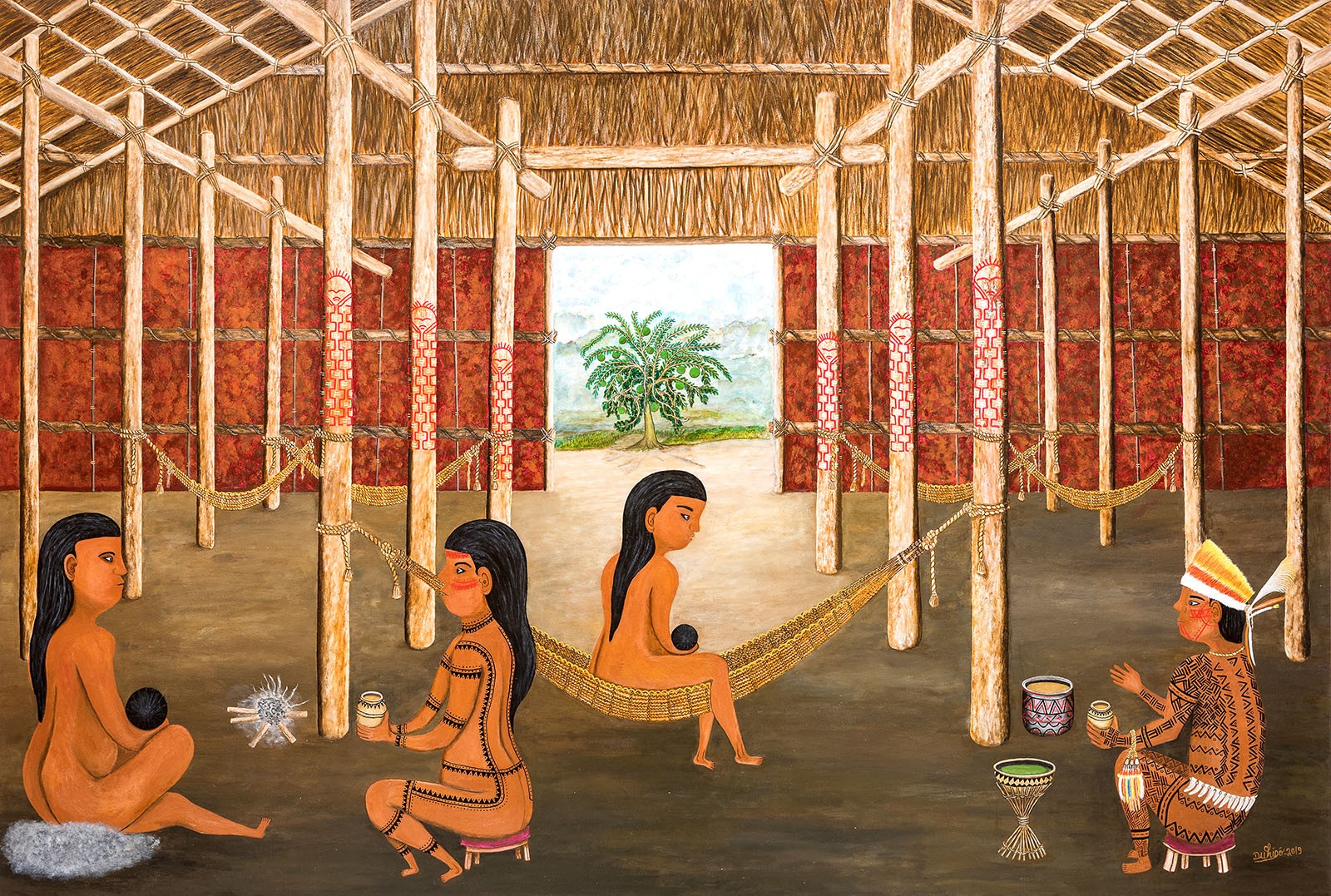Challenging the Perception of Preservation in Accra’s Architecture
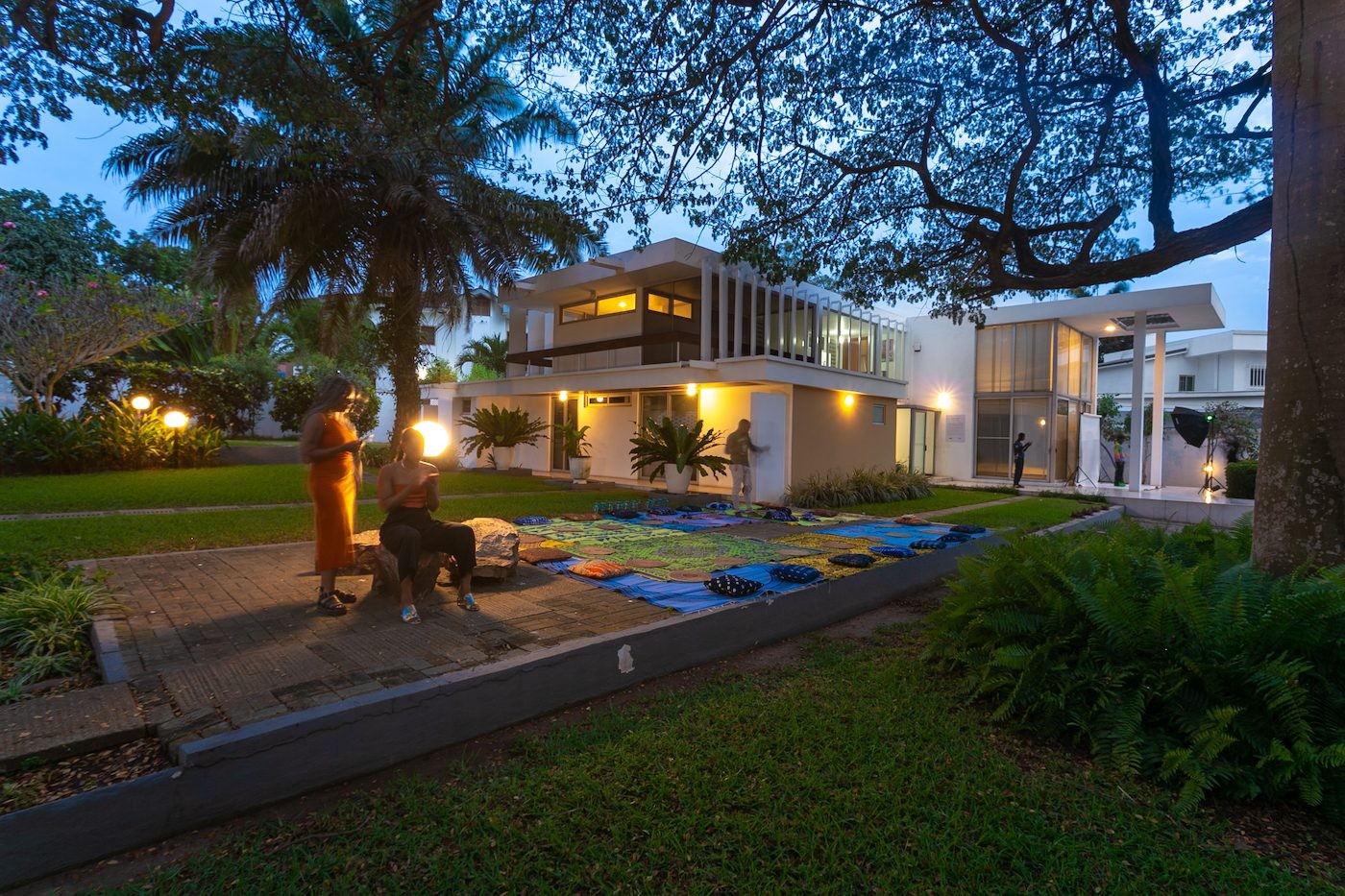
27 July 2022
Magazine C& Magazine
Words Yaa Addae
7 min read
A event night in Ghana’s capital addressed issues of public spaces and architectural history from unconventional perspectives.
I didn’t expect one of the highlights of my Accra nightlife to consist of dancing to throwback R&B jams until the early hours of the morning in the former home of modernist architect Kenneth Scott. But last December I experienced a new side of my hometown through ARCHITECTURE IS A PARTY.
In the conversation “Architecture in Black Life: Talking Space with LaVerne Wells-Bowie,” published in 1995, bell hooks and Wells-Bowie discuss Black cultural connections to space and architecture as a cultural practice. Wells-Bowie says: “Before architecture was this bastion that it is now, architecture was something that was very much informed by how people lived their lives, what their belief systems were, how they related to one another, their social and economic circumstances, another available technology in the most minimal kind of way.”
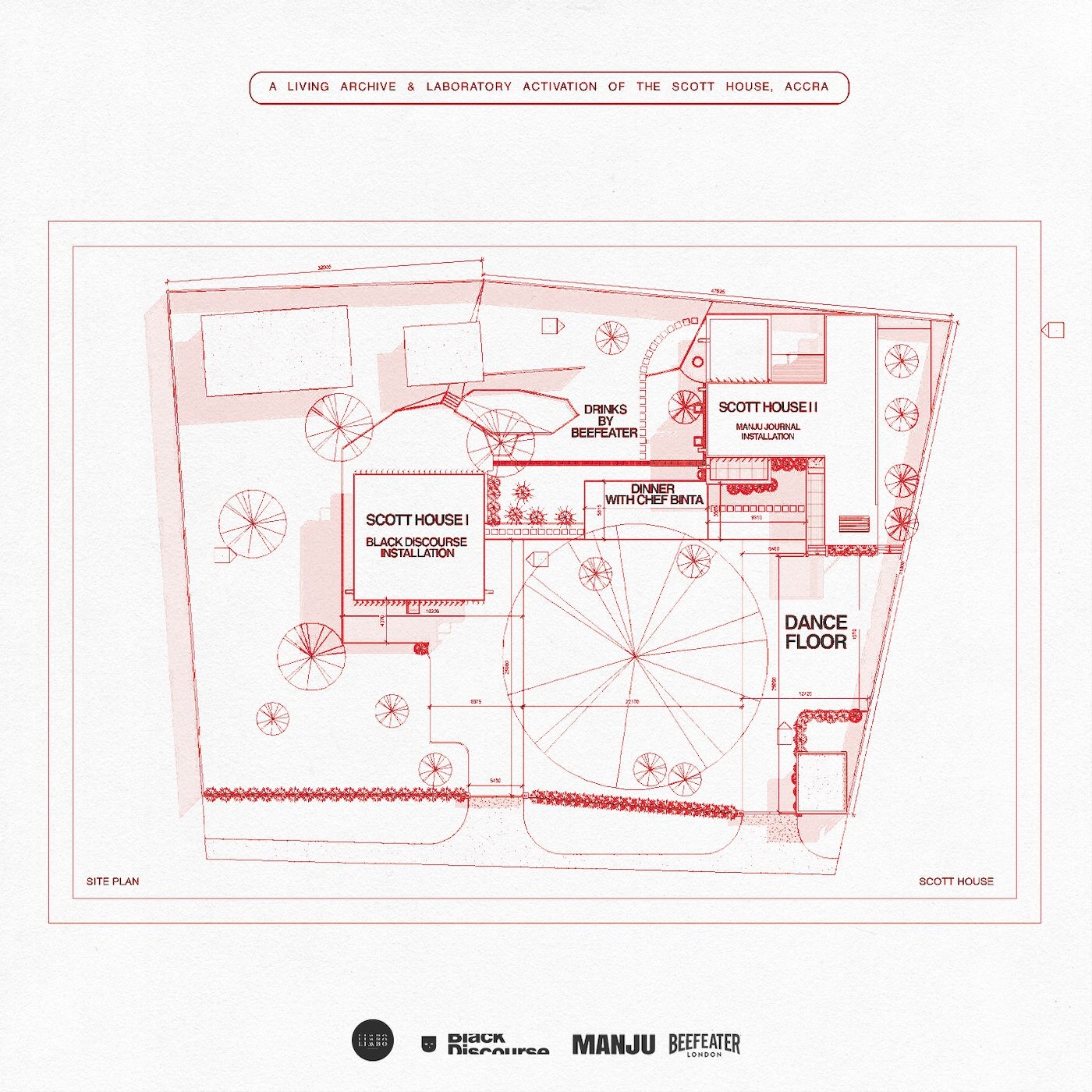
The invitation to the event and layout of the activation, designed by Jay Curry
The name Accra relates to the word nkran, which means ants. They city was founded by the Ga people in the 1500s, and if you’re familiar with the winding streets of old Accra, such as in the districts of Osu and Jamestown, you know that one can easily get lost there. It almost feels as though everything goes in a circle – narrow roads lead you right back to where you started. In 2018 a research interview with architect and former Accra mayor Nat Nunoo-Amarteifio, who passed away last year, taught me that these areas were labyrinthine by design. During the Transatlantic slave trade, the city’s coastal location meant that inhabitants were constantly under threat of kidnap; to better protect themselves, they began to build in clusters. Family homes next to family homes offered greater security and narrow, seemingly random pathways meant that you needed to be in the know to find your way around. What I had taken for a confusing lack of planning was actually an infrastructure of community care.
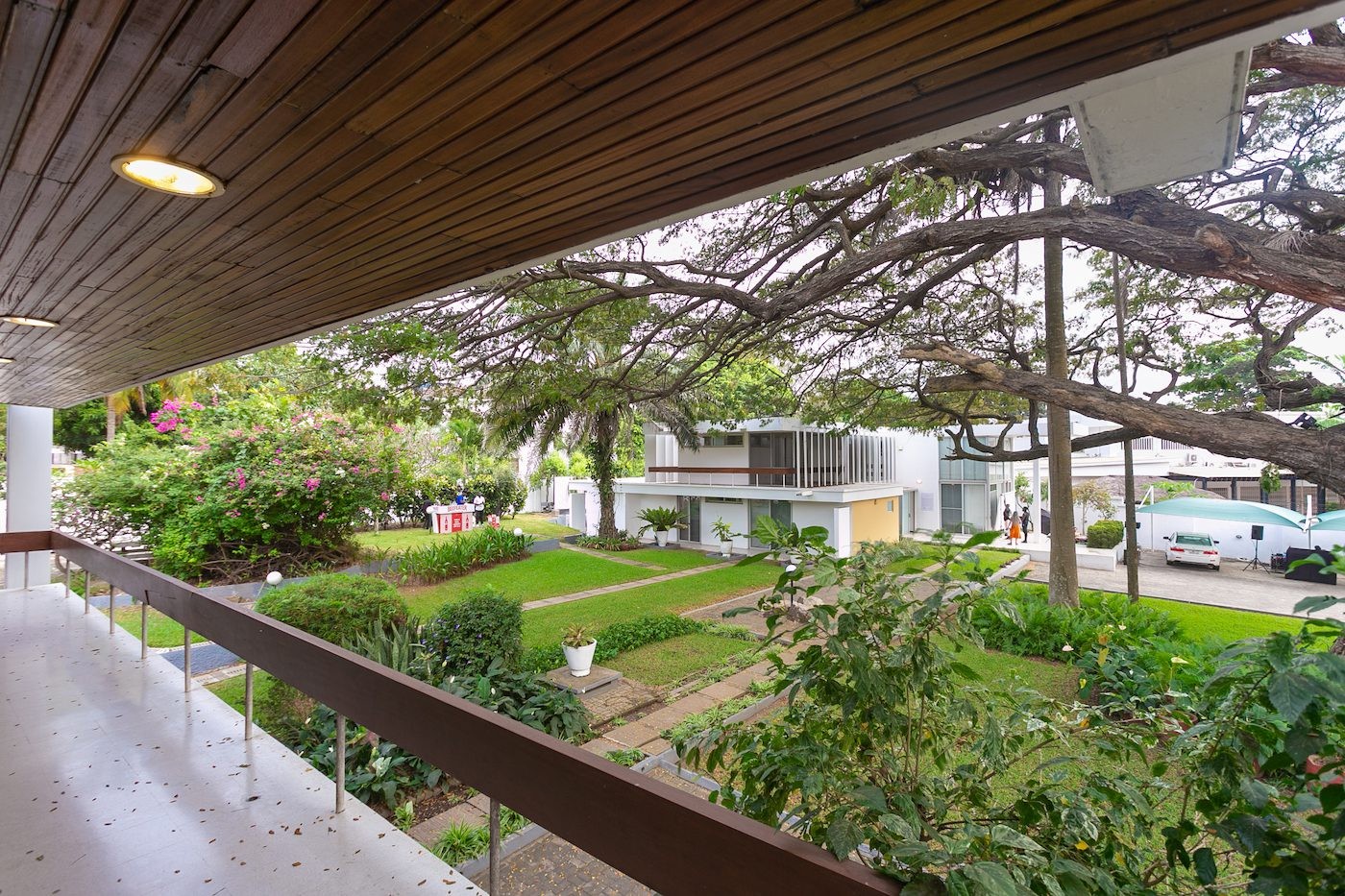
Scott house, credit: Daakpe Studios
Suddenly I learnt to look at design with a new gaze. The built environment is not just to look at, but rather an ongoing conversation with space and time. In December, standing in front of the old Scott home with ample garden space and a sprawling courtyard that invites you to explore beyond the entrance, I wondered what the space was trying to communicate.
Influenced by real estate-led development and a steady increase in tourism, the landscape of Accra is quickly changing. While the need for coming together remains, the priorities of the authorities shaping the city’s growth are not centered on public use. But initiatives such as spatial design studio Limbo Accra, founded by Dominique Petit-Frere, creative studio Cult Meraki, and rammed earth specialist Hive Earth are at the forefront of exploring the continuum of Indigenous uses of space embedded in our cultural practices. Maintaining the memory of a place by making space for it to exist in another form is no easy feat, but preservation is a core part of Limbo’s mission. Petit-Frère says she is often thinking about what city her children will be born into, and designs from there. She has brought abandoned incomplete buildings throughout the city to life by staging exhibitions in them, and her first building project, the recently opened Freedom Skate Park in East Legon, is also a testament to her approach. Designed by Limbo in collaboration with Surf Ghana, Accra’s first functional skatepark now regularly hosts lessons, workshops, and events centered on encouraging young people to experiment and play.
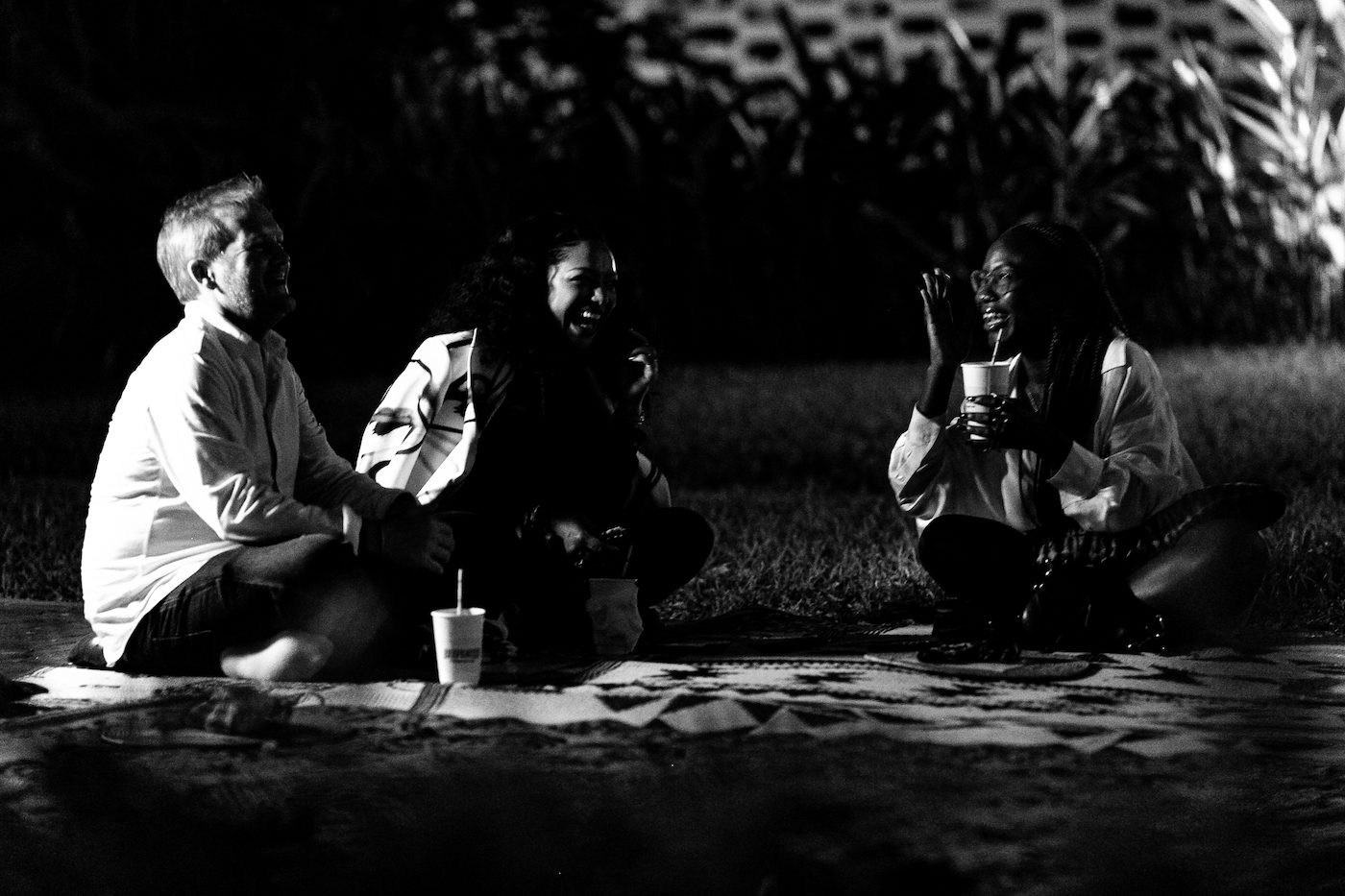
People visiting the event on the mats, credit : Daakpe Studios
This approach also informs how preservation shows up in ARCHITECTURE IS A PARTY. “The question is how can we activate all these carcass-like spaces in Accra, in Ghana,” Petit-Frère tells me. Her relationship with the Scott home began with curiosity. Always keeping her eyes open for stories that spaces keep hidden, she was drawn to its bold modernist style and its place in Accra history. Over several months, Petit-Frère got to know the second and third generation descendants of Kenneth Scott and during that time an idea took shape. It was about an event that would bring Ghanaian spatial practitioners and practitioners across the Diaspora together. Three weeks before the launch of ARCHITECTURE IS A PARTY, she was introduced to Zion Estrada and Koumbah Semega-Janneh, the creative directors of the curatorial platform Black Discourse. “It was just happenstance that I was already planning to be in Accra for December,” says Estrada. “So it was a really beautiful connect-the-dots of meeting folks that are active internationally and working with diasporic and Pan-African conversation and archivism.”
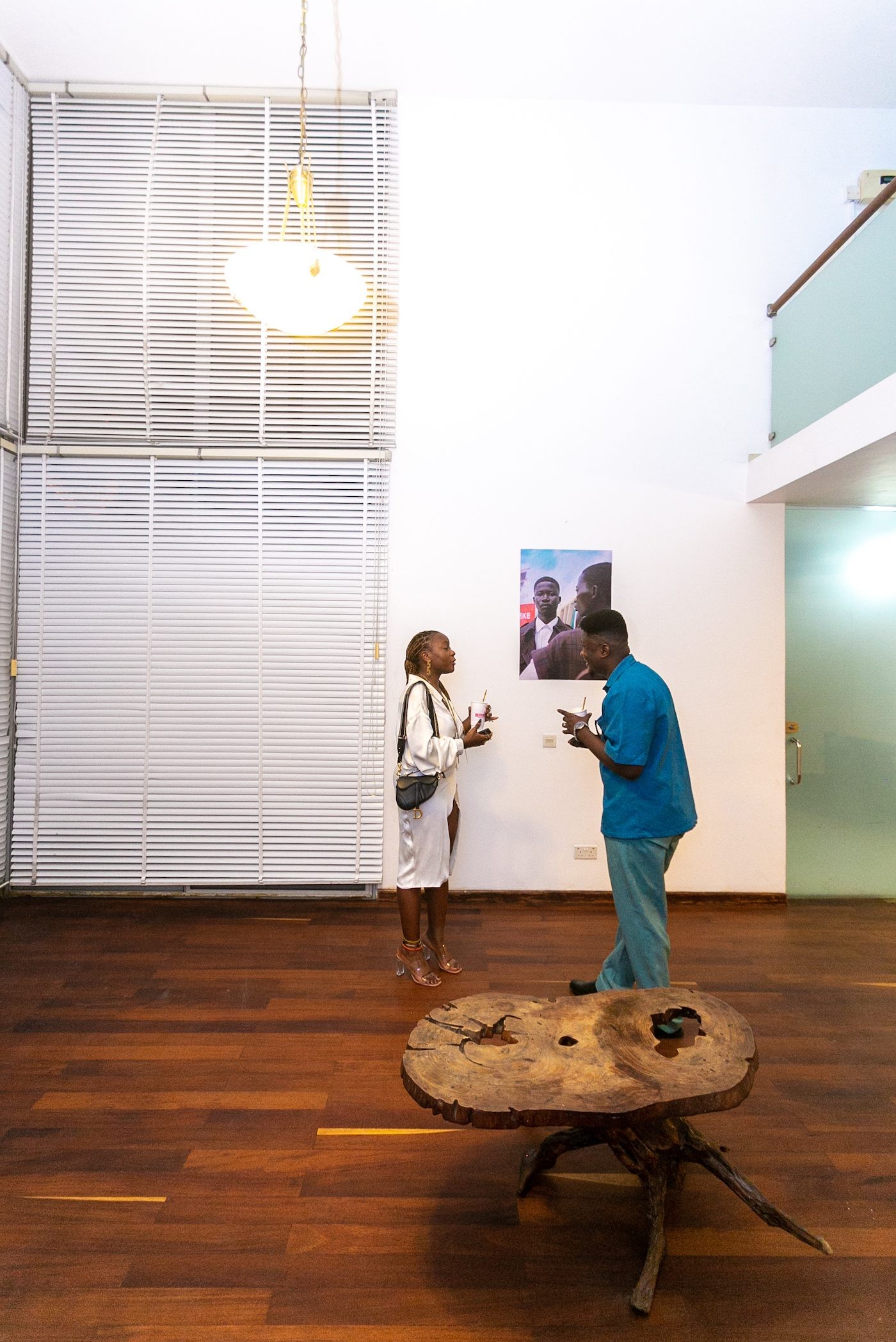
Part of the Scott House that hosted the contemporary photography exhibition curated by MANJU Journal, Credit : Daakpe Studios
The trio immediately bonded over shared passions and curiosity for innovative design across the globe, starting a back and forth on inspirations and creating a knowledge bank of ideas to pull from. Everything that informed ARCHITECTURE IS A PARTY came together, from spatial history interviews with Scott family members and caretakers of the house, to bringing in art platform MANJU Journal to curate an exhibition featuring contemporary photographers. Award-winning Chef Binta was invited to create a Fulani-inspired menu to complement the futuristic conversations that would take place during the event, and newly launched OROKO Radio would provide the soundtrack for the festivities. Also born was the Reclamation Project, an archival sound installation investigating preservation and design at the intersection of inheritance and stewardship through spatial interviews with groundskeepers, family members, and other witnesses. “It’s a special experience when you go back somewhere and think, ‘This was my old spot’ – if it’s a town or a swing or a park,” says Estrada, reflecting on the importance of capturing the emotions and somatic experiences that inform how we relate to space. “You go back and everything opens up and you start tapping into different memories, which can help you move forward or self-reflect, which I think is part of progression.”
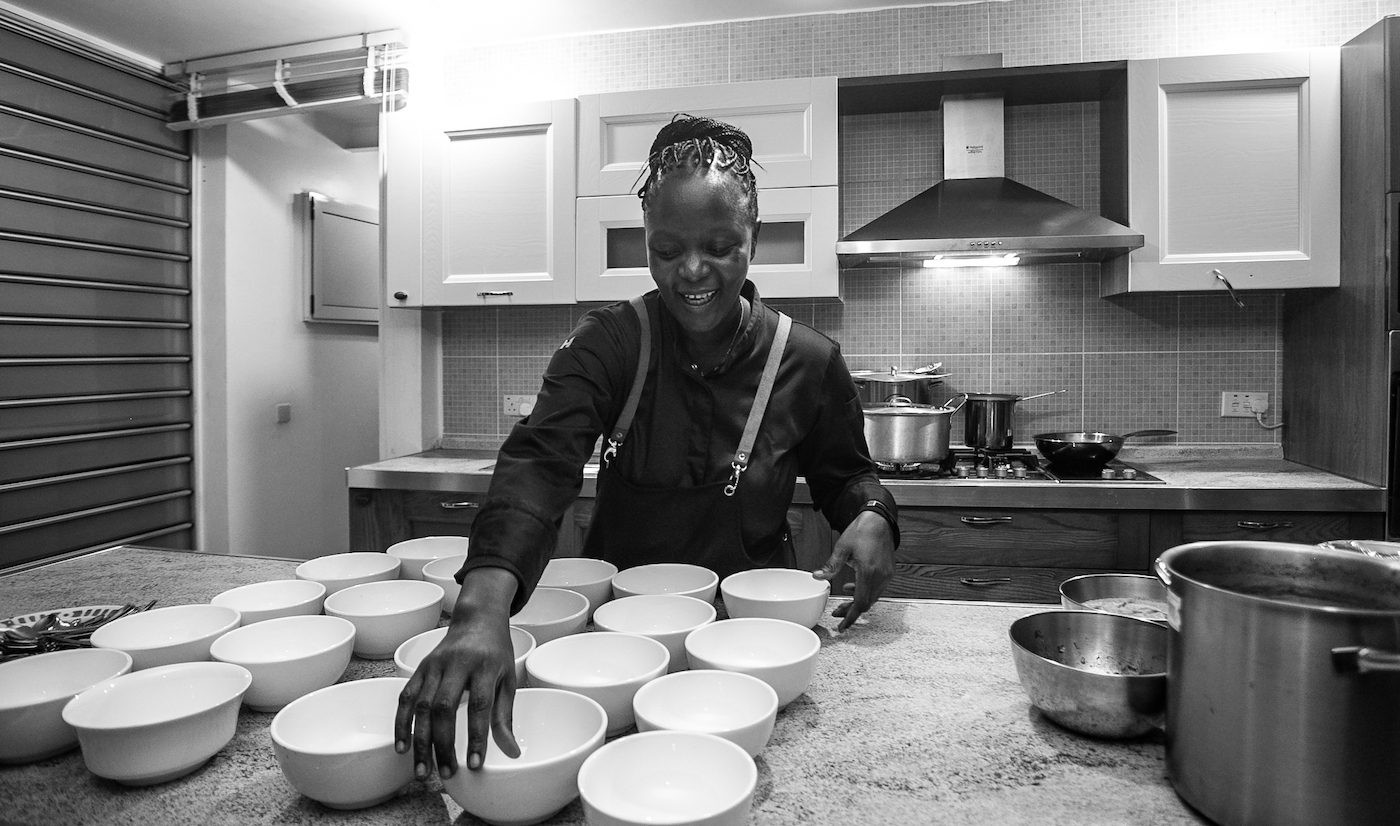
Chef Binta prepping for her Fulani-inspired dinner, Credit : Daakpe Studios
Six months later, what’s next for this budding initiative? Black Discourse’s and Limbo’s long-term vision is to continue ARCHITECTURE IS A PARTY as a site-based archival project examining spatial preservation, design, and stewardship on the grounds of pre-imperialist, colonial, and post(neo)-colonial architectural masterpieces. They hope the series might travel across the Global South, making archivists and spatial designers intimately acquainted with such cultural heritage spaces through residencies. The inaugural project in December 2021 introduced ways of practicing preservation away from ideas of leaving old things alone and by openly engaging with objects behind glass cases or with restricted access.
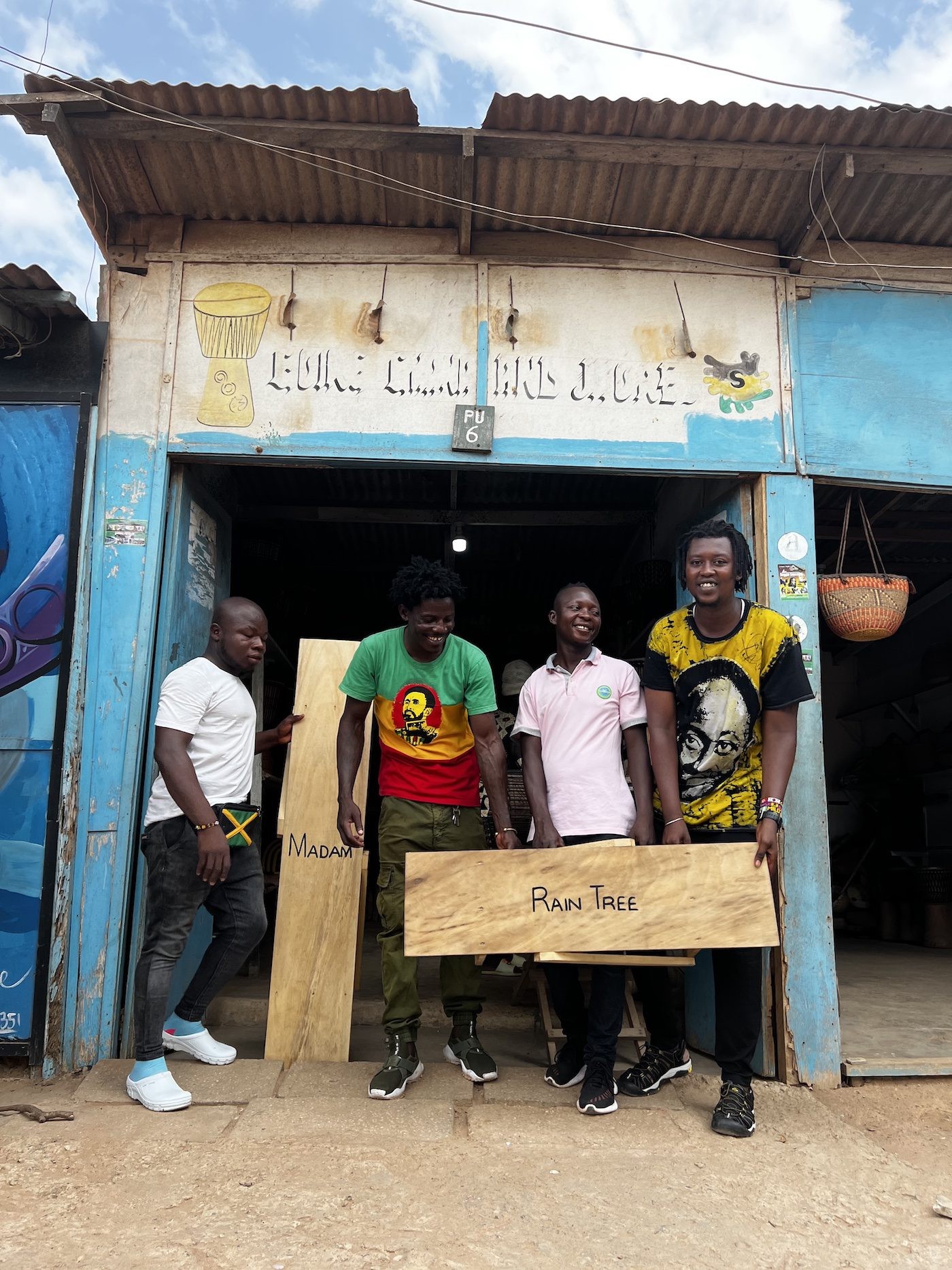
Local Craftsmen carrying the hand carved bench artifact for the installation, credit : Zion Estrada
In 2022, Limbo’s relationship to Scott House was cut short as it is no longer a family residence or as easily accessible – proving that this kind of preservation work is crucial at this stage of Accra’s transformation where demolition/construction is always happening in local neighborhoods and new-rise apartments are quickly populating our skyline in their place. In line with this, the past few years have seen integral parts of Accra’s history being swallowed in the ravenous real estate market, fuelling Black Discourse’s and Limbo’s mission to socialize, repurpose, and reactivate forgotten heritage sites through embodied preservation. By bringing people in, so new memories are activated, the cultural lineage of architecture can continue.
Yaa Addae is a curator, writer, and artist who works as a community researcher at COMUZI. Their practice is informed by the liberatory power of the imagination,play, and restorative love economics: bringing love to the systemically underloved.
Read more from

On Ghosts and The Moving Image: Edward George’s Black Atlas

Confronting the Absence of Latin America in Conversations on African Diasporic Art

On Exile, Amulets and Circadian Rhythms: Practising Data Healing across Timezones
Read more from
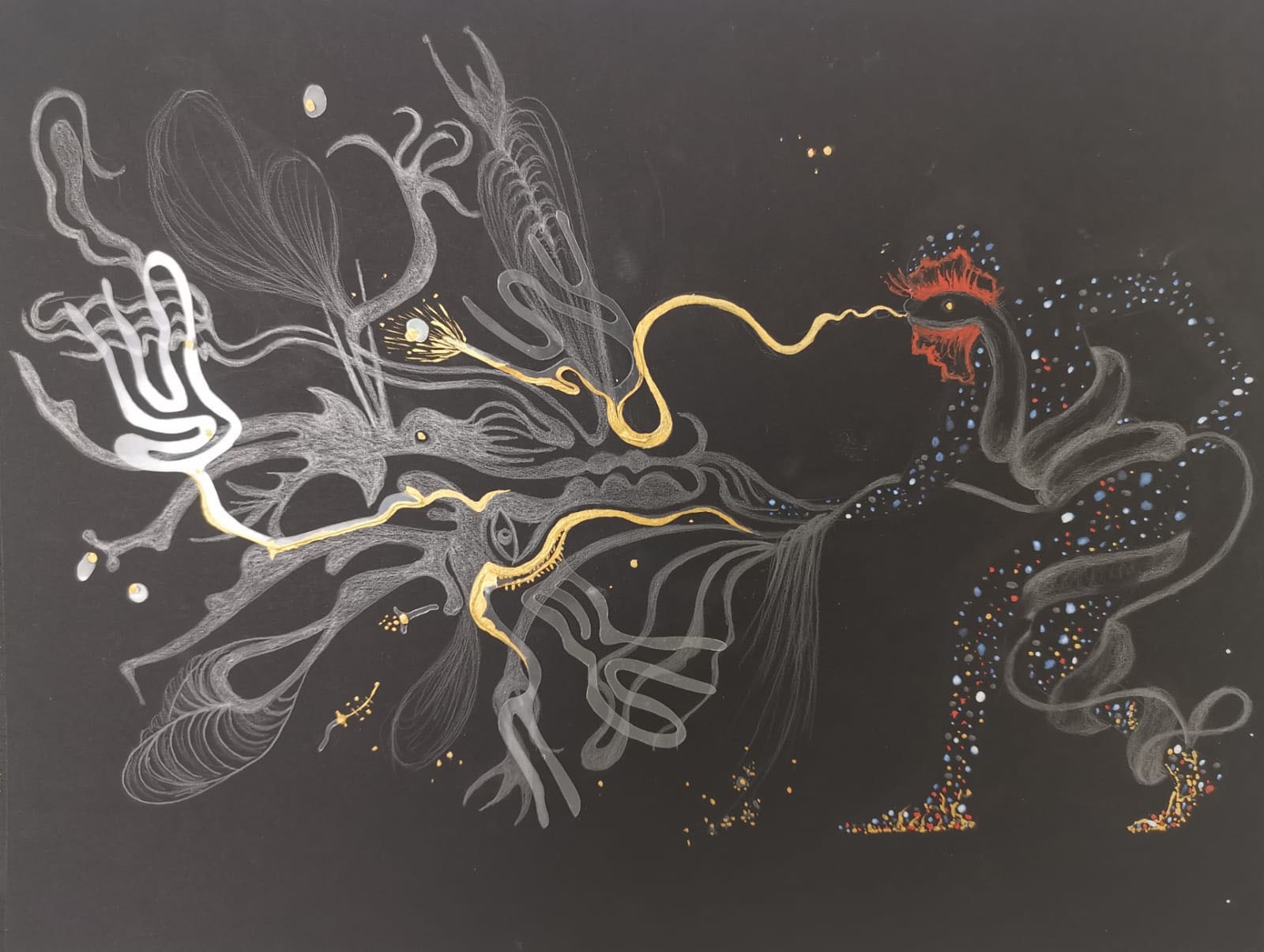
The Spiritual Technologies of Jamaican Maroons
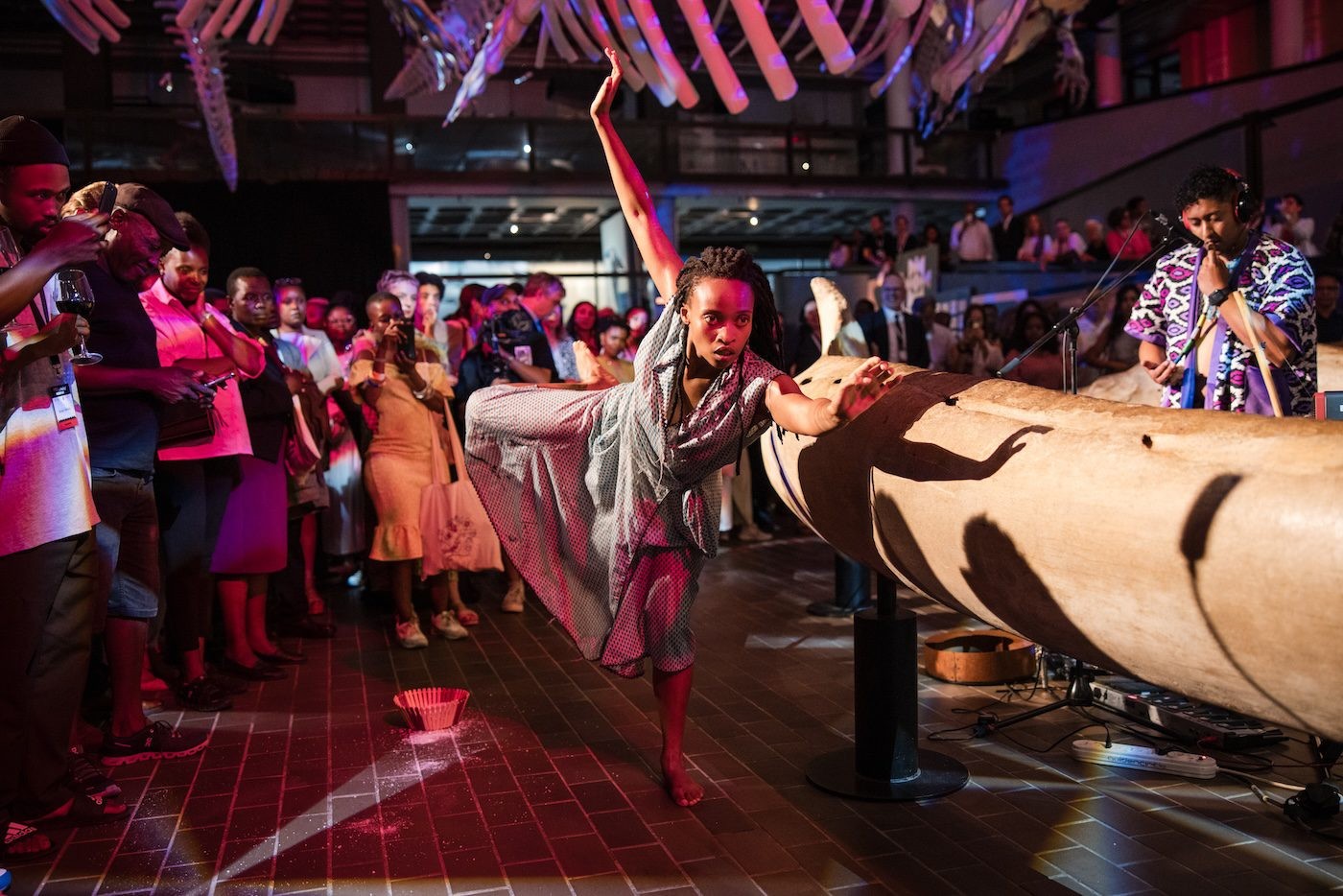
What Needs to be Considered When Running a Museum in (South) Africa?
